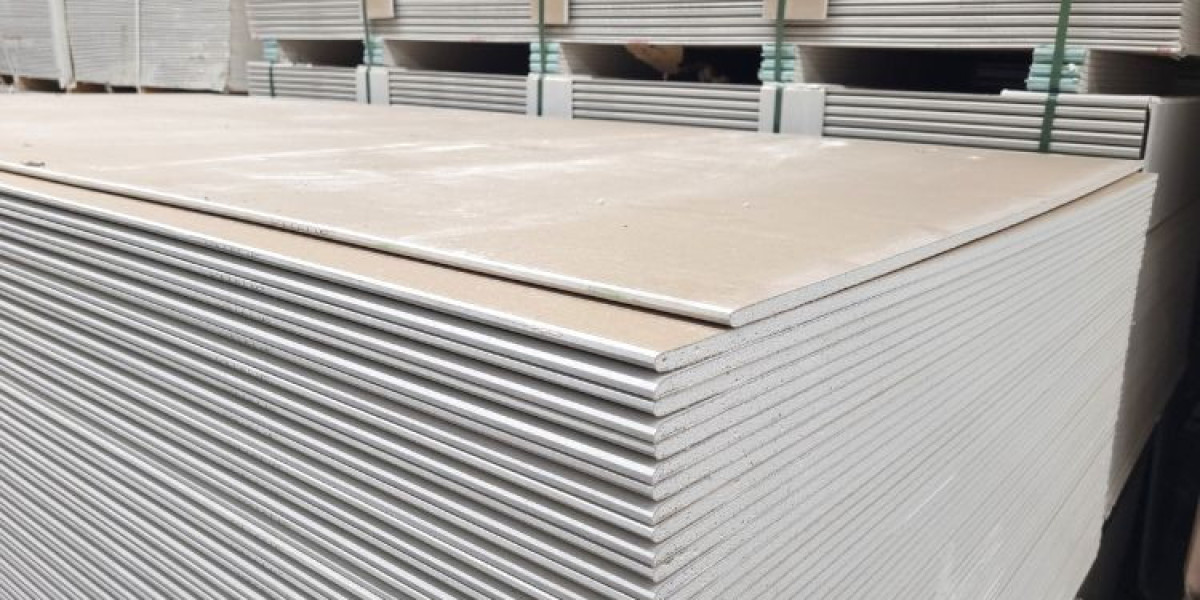The global plasterboard market size stood at a value of more than USD 24.27 billion in 2023. The market is further expected to grow in the forecast period of 2024-2032 at a CAGR of around 5.3%, reaching a value of over USD 38.57 billion by 2032. This growth is driven by increasing construction activities, urbanization, and a growing preference for sustainable building materials. In this blog post, we will explore the various facets of the plasterboard market, including its segmentation by form, product type, and end-user, as well as regional insights, market dynamics, and competitive landscape.
Market Overview
Plasterboard, commonly known as drywall or gypsum board, is a widely used building material in residential and commercial construction. Its versatility makes it a preferred choice for interior walls and ceilings, offering benefits such as ease of installation, sound insulation, fire resistance, and moisture control. As construction activities ramp up globally, the demand for plasterboard continues to rise, highlighting its significance in modern architecture.
Market Segmentation
By Form
The plasterboard market can be segmented into several forms, each catering to specific construction needs:
Tapered-Edged: This form is popular for wall applications as it allows for seamless joints, creating a smooth finish. Tapered edges facilitate easier taping and finishing, making it ideal for residential and commercial projects.
Square-Edged: Square-edged plasterboards are commonly used for partitions and ceilings. They offer a straightforward installation process and are often preferred in environments where a consistent appearance is required.
Round-Edged: Although less common, round-edged plasterboard is utilized in applications that require curved walls or rounded corners, providing design flexibility.
Bevelled-Edged: This type is specifically designed for applications requiring enhanced aesthetics. The beveled edges allow for a clean finish, making it suitable for visible areas in interior design.
Others: Emerging forms include specialized boards designed for specific needs, such as impact resistance or acoustic performance, catering to niche markets.
By Product Type
The product type segment highlights the various functionalities that plasterboard can offer:
Fire-Resistant: With growing emphasis on safety regulations, fire-resistant plasterboards are gaining traction in both residential and commercial construction. They are treated with fire-retardant chemicals, making them essential in fire-prone areas.
Sound Insulation: As urban living increases, the demand for sound insulation is more critical than ever. These plasterboards are designed to minimize sound transmission, enhancing comfort in residential apartments and commercial spaces.
Moisture-Resistant: Essential for areas exposed to high humidity, such as kitchens and bathrooms, moisture-resistant plasterboards prevent mold growth and structural damage.
Others: This category includes specialized plasterboards for unique applications, such as acoustic panels for theaters or impact-resistant boards for schools and hospitals.
By End-User
The end-user segment indicates where plasterboard is predominantly used:
Residential: The residential sector is a significant driver of plasterboard demand, fueled by new housing projects and renovations. Consumers increasingly seek energy-efficient and aesthetically pleasing materials.
Commercial: In the commercial sector, the demand for plasterboard is driven by the construction of offices, retail spaces, and hospitality venues. The need for quick installation and customizable interior designs makes plasterboard a favored option.
Industrial: While less common than residential and commercial uses, plasterboard finds application in industrial settings, particularly for partitioning and fire-resistant walls.
Others: This includes public buildings, schools, and healthcare facilities where specific performance characteristics are required.
Regional Analysis
Understanding regional dynamics is crucial for grasping the plasterboard market's growth potential.
North America: This region is one of the largest markets for plasterboard, driven by robust construction activity and a high demand for residential renovations. The trend toward eco-friendly materials also boosts the market.
Europe: In Europe, stringent building regulations regarding fire safety and energy efficiency support the growth of specialized plasterboards. Countries like Germany and the UK are key contributors.
Asia-Pacific: The Asia-Pacific region is expected to witness the highest growth due to rapid urbanization and infrastructural developments, particularly in countries like China and India.
Latin America: While still developing, Latin America shows promise due to increasing investments in construction and a growing middle class.
Middle East & Africa: The market in this region is driven by infrastructure projects and commercial developments, particularly in countries like the UAE and South Africa.
Market Dynamics
Drivers
The growth of the plasterboard market can be attributed to several key drivers:
Increasing Construction Activities: With urbanization on the rise, construction activities are surging globally, boosting the demand for plasterboard.
Preference for Sustainable Materials: As awareness of sustainability grows, builders and consumers are leaning toward eco-friendly materials, which plasterboard can effectively address.
Restraints
Despite the growth prospects, some challenges exist:
Fluctuating Raw Material Prices: The cost of gypsum, the primary ingredient in plasterboard, can be volatile, affecting pricing stability.
Competition from Alternative Materials: Alternatives like plywood and cement boards pose a threat to the plasterboard market, particularly in specific applications.
Opportunities
Looking ahead, the plasterboard market presents numerous opportunities:
Innovations in Technology: Advancements in plasterboard technology, such as improved fire resistance and sound insulation properties, can open new market avenues.
Expansion into Emerging Markets: As economies in developing regions grow, the demand for construction materials, including plasterboard, is expected to rise.
Competitive Landscape
The plasterboard market is characterized by the presence of several key players, each vying for market share through innovation and strategic alliances. Major companies like Saint-Gobain, USG Corporation, and Knauf have established a strong foothold, employing strategies such as mergers and acquisitions, product diversification, and sustainability initiatives.
Emerging startups are also entering the market, offering unique solutions and contributing to competitive dynamics. The focus on eco-friendly practices and the integration of technology in product development are becoming key differentiators in this landscape.
Future Outlook (2024-2032)
As we look to the future, the plasterboard market is poised for significant growth. The projected CAGR of around 5.3% highlights the ongoing demand driven by construction activities and an increasing focus on sustainable building practices. Anticipated advancements in product technology and a shift toward greener materials will further shape market dynamics.








